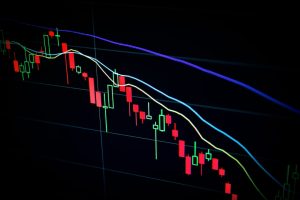Supply and demand is a fundamental concept in the forex market, and understanding how to draw supply and demand levels is vital for traders looking to identify key areas of support and resistance. Supply and demand levels refer to the price levels at which buyers and sellers have historically entered or exited the market, and can provide valuable insights into market sentiment and potential price movements.
Drawing supply and demand levels involves identifying areas where significant buying or selling activity has occurred in the past, and plotting these levels on a chart. Here are the steps to follow when drawing supply and demand levels in forex:
Step 1: Identify key support and resistance levels
The first step in drawing supply and demand levels is to identify key support and resistance levels on a price chart. Support levels are areas where buyers have historically stepped in to buy an asset, preventing prices from falling further. Resistance levels are areas where sellers have historically entered the market, preventing prices from rising higher. These levels can be identified by looking for areas where prices have bounced off the same level multiple times in the past, creating a horizontal line on the chart.
Step 2: Look for significant price movements
Once support and resistance levels have been identified, the next step is to look for significant price movements that have occurred in the past. These movements can indicate where buyers or sellers have entered or exited the market in large numbers, and can provide valuable insights into where supply and demand levels may lie. Traders can look for large price spikes or long candlesticks that have occurred at key support or resistance levels, as these can indicate significant buying or selling activity.
Step 3: Draw supply and demand zones
Once key support and resistance levels and significant price movements have been identified, the next step is to draw supply and demand zones on the chart. Supply zones are areas where sellers have historically entered the market in large numbers, causing prices to fall. Demand zones are areas where buyers have historically entered the market in large numbers, causing prices to rise. These zones can be drawn as rectangles on the chart, with the upper and lower bounds determined by the price movements that have occurred in the past.
Step 4: Monitor price movements
Once supply and demand zones have been drawn on the chart, traders should monitor price movements to see how the market reacts to these levels. If prices approach a supply zone, traders may look for signs of selling pressure, such as bearish candlestick patterns or a decrease in trading volume. If prices approach a demand zone, traders may look for signs of buying pressure, such as bullish candlestick patterns or an increase in trading volume. By monitoring price movements around supply and demand levels, traders can gain valuable insights into market sentiment and potential price movements.
In conclusion, drawing supply and demand levels is an essential skill for forex traders looking to identify key areas of support and resistance on a price chart. By identifying key support and resistance levels, looking for significant price movements, drawing supply and demand zones, and monitoring price movements, traders can gain valuable insights into market sentiment and potential price movements. Learning how to draw supply and demand levels can take time and practice, but it is a skill that can help traders become more successful in the forex market.





